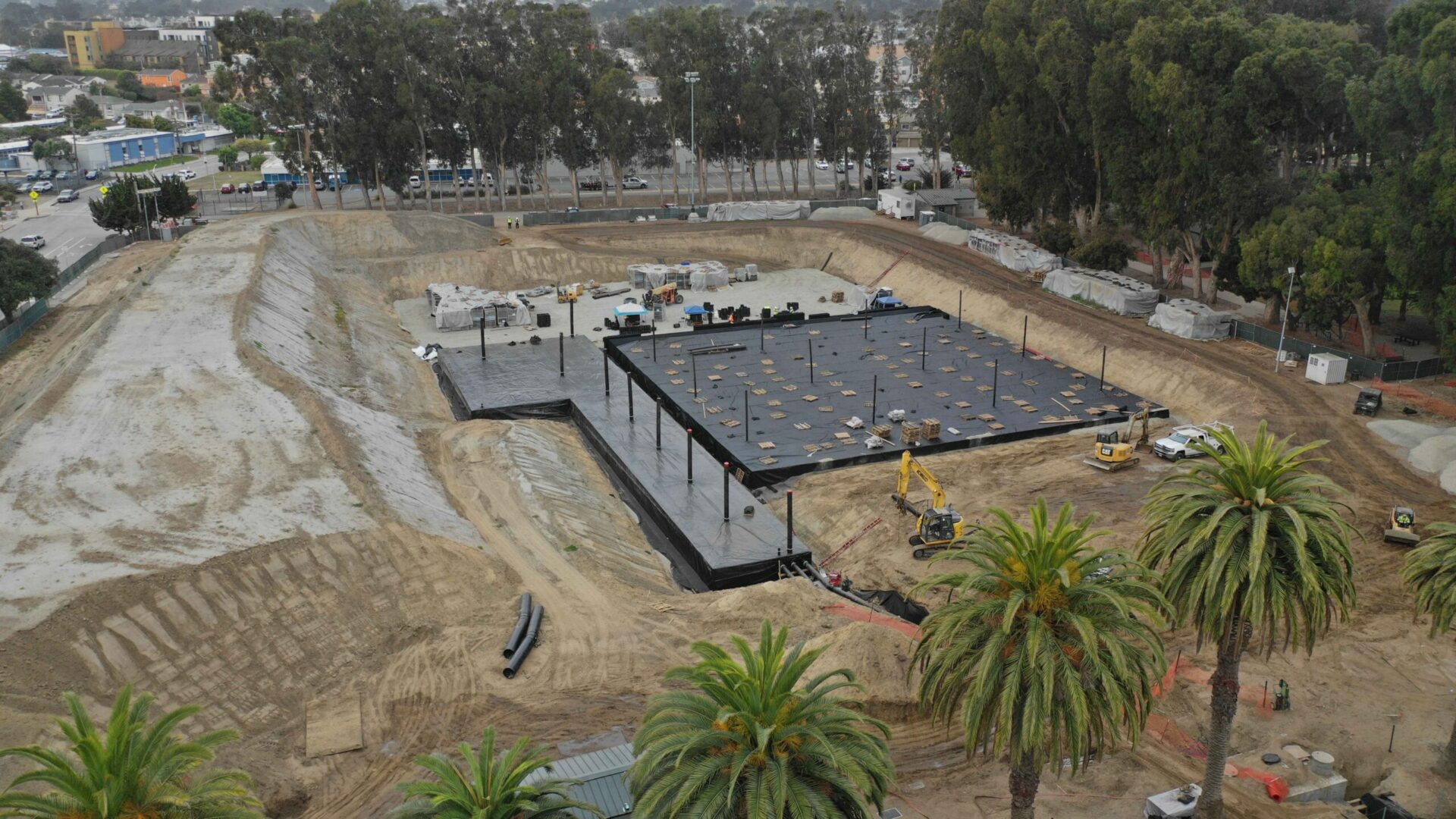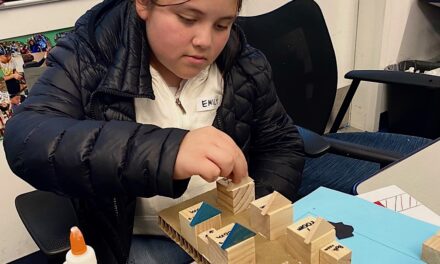Regional Storm Capture Facility Going to Ground
With rains overwhelming local drains in late October, the visible construction progress over the summer on Orange Memorial Park, a regional stormwater capture facility in South San Francisco, seems timely.
More than 6,500 acres of the Colma Creek watershed, in six municipalities, drain through the new regional facility. The facility, scheduled for completion in 2022, includes trash screens, a sediment removal chamber, and a giant storage basin under sports fields. It is designed to filter pollutants in runoff, percolate groundwater, and irrigate local parks and trailsides (offsetting potable water demand).
Former San Mateo County stormwater director Matt Fabry calls it “An ambitious multi-benefit project with water quality and resilience benefits.”
Areas sensitive to erosion on the half-constructed park weathered the recent atmospheric rain event under tarps and behind silt fences.
Current construction activities for the complex stormwater capture project are focused on excavation of a large subsurface drainage system. Crews recently installed modules for a 1.4 million gallon-below-ground cistern and infiltration gallery, and are working to connect pipework, maintenance ports and manholes. Installation of the modules will continue into November, followed by back filling of the entire system.

Two parts of the project located within Colma Creek, including a trash and sediment capture system (aka grit filter), required permits from the Peninsula’s fledgling Sea Level Rise and Resiliency District, US Fish and Wildlife, and the Regional Water Quality Control Board. Work in the creek also required completion before October 1 to avoid disturbing birds nesting in the riparian zone. Surface restoration will be a next step.
“We had to switch regulatory gears mid-permitting from the county flood district to the new sea level rise and resiliency district,” says project manager Bianca Liu, from the City of San Francisco. “There’s a lot of eyes on us because this the first regional scale stormwater capture and green infrastructure project, and it sets a precedent for the future.”
Project costs are $15.5 million, bankrolled by Caltrans and local jurisdictions to fulfill stormwater management mandates and mitigate for trash, PCBs, and other polluted runoff to the Bay. The project also optimizes water use and groundwater recharge in times of drought.
“When the capture basin is full, we’ll be putting the excess, clean water rather than dirty water, back into the creek,” says Liu.
The project is one of a variety of multi-partner initiatives to improve water quality and flood capacity along Colma Creek, including projects still in proposal stages inspired by the 2018 Resilient by Design Bay Area Challenge vision for the Colma Creek Watershed.
With Orange Memorial Park under construction, meanwhile, the debate over how to optimize infrastructure investments far into the future now has one tangible new example.
“This wasn’t your typical infrastructure project, the regional scale created a lot of challenges in permitting, funding and interjurisdictional decision-making. Our next challenge will be how to collaborate on O&M,” says Liu, referring to operations and maintenance responsibilities and budgets that no municipality wants to shoulder alone.
Keeping the new park and its complex underground hardware working far into the future won’t be cheap. But kids will be able to kick and bat balls on sports fields on top of the stormwater basin by 2023.
Other Recent Posts
ESA
ESA is an environmental engineering firm that does restoration and resilience projects.
Gleaning in the Giving Season
The practice of collecting food left behind in fields after the harvest is good for the environment and gives more people access to produce.
New Study Teases Out Seawall Impacts
New models suggest that sea walls and levees provide protection against flooding and rising seas with little effect on surrounding areas.
Oakland High Schoolers Sample Local Kayaking
The Oakland Goes Outdoors program gives low-income students a chance to kayak, hike, and camp.
Growing Better Tomatoes with Less Water
UC Santa Cruz researchers find the highly-desired ‘Early Girl’ variety yields more tomatoes under dry-farmed conditions.
Santa Clara Helps Homeless Out of Harm’s Way
A year after adopting a controversial camping ban, Valley Water is trying to move unsheltered people out of the cold and rain.
The Race Against Runoff
San Francisco redesigns drains, parks, permeable pavements and buildings to keep stormwater out of the Bay and build flood resilience.
Learning the Art of Burning to Prevent Wildfire
In Santa Rosa’s Pepperwood Preserve, volunteers are learning how controlled fires can clear out natural wildfire fuel before it can spark.
Martinez Residents Want More Than Apologies — They Want Protection
After a 2022 release of toxic dust and a February 2025 fire, people in the northeast Bay town are tired of waiting for safety improvements.
Weaving Fire Protection Out Of What’s Already There
A new Greenbelt Alliance report shows how existing vineyards, grasslands, and managed forests can slow wildfire and save vulnerable homes.










